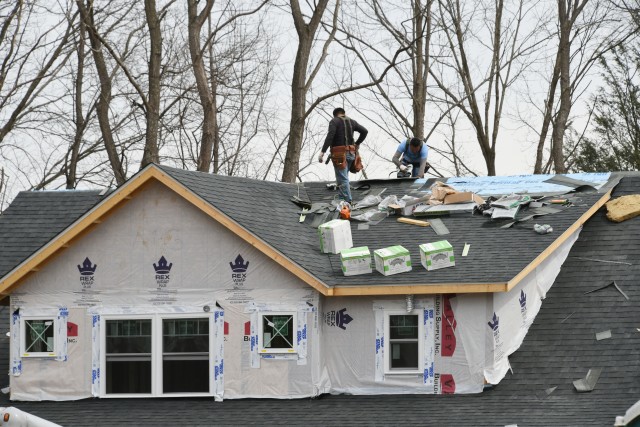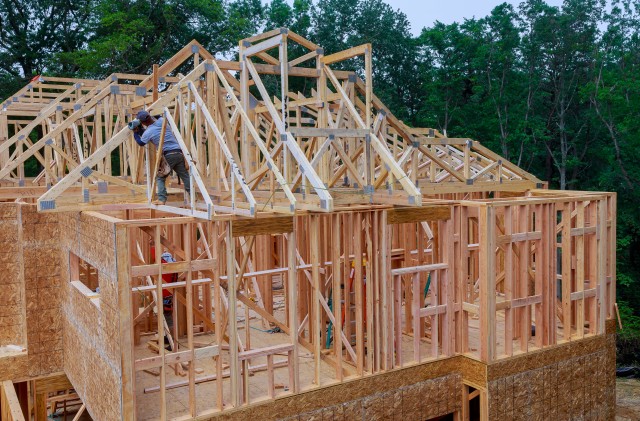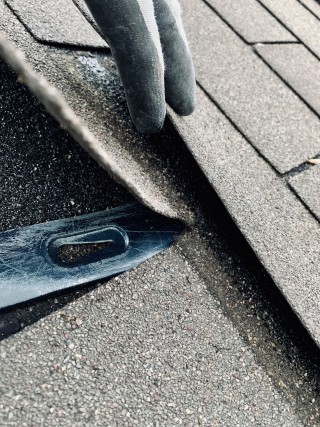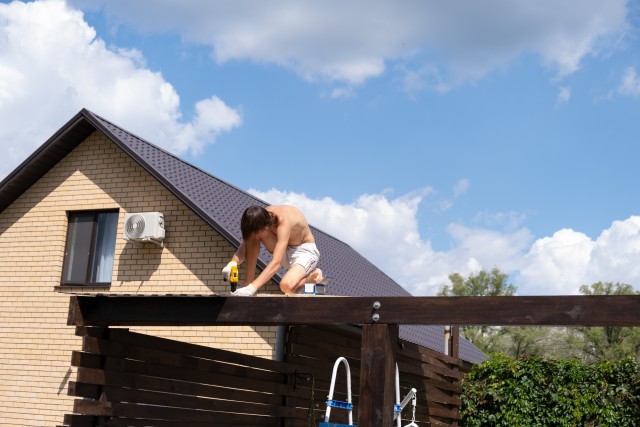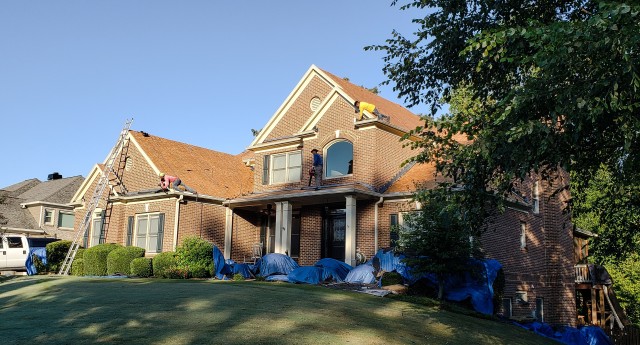Weatherproofing Roof Insulation Your roof insulation is one of the most important steps you can take to protect your home from extreme temperatures and weather conditions. Properly installed and maintained roof insulation will not only keep the heat in during cold winter months but also help reduce cooling costs during hot summer days. In this blog post, we’ll discuss why it’s essential to have a well-insulated roof, how to choose the right material for weatherproofing your roof insulation, and some tips on proper maintenance. So let’s get started!
Insulating your roof is important for several reasons. For starters, it helps keep the heat inside during winter months and cool air in during summer days. This can help reduce energy costs by preventing heated or cooled air from escaping through the roof and out of your home. Additionally, properly insulated roofs help prevent ice dams from forming on your roof, which can cause damage to shingles and even result in leaks. Lastly, a well-insulated roof will also protect against moisture buildup from rain and snow, which can lead to mold growth if left unchecked.
When selecting a material to use for weatherproofing your roof insulation, you want to choose something that will provide good thermal resistance and be durable enough to withstand all types of weather. For example, a high-quality reflective foil is great for insulation because it reflects the sun’s rays and helps keep temperatures inside more consistent. It also has excellent waterproofing properties, making it ideal for keeping moisture out of your attic. Other materials like closed-cell spray foam or fiberglass batt insulation are popular options, too, since they provide good thermal resistance while still allowing airflow through the material.
Once you’ve chosen your weatherproofing material, proper maintenance is key to ensuring your roof insulation stays in top shape. Make sure to inspect your roof regularly for any signs of wear or damage that could lead to leaks or other problems down the line. Additionally, check for gaps around eaves and vents where air can escape which can reduce the effectiveness of your insulation. Finally, be sure to keep on top of any repairs that need to be done, such as replacing old shingles or resealing seams.
Weatherproofing your roof insulation is an important part of protecting your home from extreme temperatures and weather conditions. Properly installed and maintained insulation will help improve energy efficiency while also preventing leaks and ice dams from forming on the roof. Be sure to choose a good material for weatherproofing, inspect your roof regularly, and maintain it so you can get the most out of your roof insulation!
Table of Contents
ToggleWeatherproofing Roof Insulation
Foam insulation is a popular choice for weatherproofing roofs due to its excellent insulating properties. It also provides superior moisture control and has the ability to effectively keep air and water out. Foam insulation can be applied either as a spray or as rigid foam boards, which offer increased thermal resistance over sprays. It is important to note that foam insulation should be sealed properly in order to maintain its effectiveness. Otherwise, it could allow water vapor to penetrate and cause damage. Additionally, when applying rigid foam boards, gaps should be filled with caulk or other sealants in order to prevent air leakage.
Compared to other types of insulation materials such as fiberglass batts and reflective foil, foam insulation has higher R-values meaning it can provide better energy efficiency by creating a tighter seal around your roof structure and blocking more heat from entering or leaving the home. Additionally, because of its high thermal resistance capabilities, foam insulation is capable of handling extreme temperatures without breaking down over time so it’s ideal for use in areas with unpredictable weather conditions.
Finally, it’s essential to remember that proper maintenance is key when using foam insulation for weatherproofing your roof. As mentioned earlier, any gaps or seams must be sealed in order to prevent air leakage, while any damaged areas should be repaired immediately in order to maintain the integrity of the material. Additionally, make sure to inspect your roof regularly for signs of wear or damage that could compromise the effectiveness of the insulation. By following these simple steps you can ensure that your roof remains well-insulated and protected from harsh weather conditions all year long!
Spray foam insulation
Spray foam insulation is an increasingly popular choice for weatherproofing roofs due to its superior insulating properties. Spray foam insulation combines two materials – a polyurethane resin and a foaming agent – to expand and fill any cracks or crevices, creating an airtight seal that locks in heat in winter and blocks out the cold in summer. It also has excellent water-resistance properties, making it ideal for areas with unpredictable weather conditions.
Spray foam insulation is applied as a liquid which then expands and hardens into a solid material. This allows it to conform to the shape of the roof, creating a tight fit that helps prevent air leakage more effectively than traditional insulation materials like fiberglass batts or reflective foil. Furthermore, spray foam insulation also has higher R-values compared to other types of insulation, meaning it can help you save money on your energy bills by blocking more heat from entering or leaving your home.
When installing spray foam insulation on your roof, it’s important to create an effective vapor retarder system. This will help keep moisture out while also preventing mold growth due to high humidity levels within the home. Additionally, make sure there are no gaps between the eaves and vents as these can be entry points for air leakage which can reduce the effectiveness of your insulation. Finally, ensure that there is proper ventilation within the attic space so that moisture doesn’t become trapped within the home’s interior walls.
Overall, spray foam insulation is an excellent choice for weatherproofing roofs due to its energy-efficient qualities and superior ability to limit air leakage. By following these tips you can ensure that your roof remains well-insulated all year round!
Batt insulation
Batt insulation is a cost-effective and widely-used solution for protecting your home from extreme temperatures and weather conditions. It’s made of fibrous materials such as fiberglass, mineral wool, or plastic fibers which are designed to provide thermal resistance while also being lightweight and easy to install. Batt insulation is typically used in walls or ceilings where there is minimal space for insulation materials but it can also be used on roofs when combined with other types of insulation.
In order to maximize its efficacy, batt insulation must be installed properly by evenly spacing the material throughout the area. This helps ensure that no gaps are present which could allow air leakage or moisture infiltration to occur, compromising the integrity of the material. Additionally, batt insulation should also be covered with a vapor retarder such as kraft paper in order to create an effective barrier against water vapor transmission.
Batt insulation offers several advantages over spray foam insulation including lower installation costs and faster installation times due to its ability to conform to irregular shapes more easily than foam. Additionally, because fiberglass batts have been on the market for a long time, they are widely available and come in different thicknesses so you can choose the one that best fits your needs. They also have lower R-values than spray foam insulation so it may not provide as much energy efficiency compared to other types of insulation materials.
Overall, batt insulation is a popular choice for roofing projects due to its cost-effectiveness and ease of installation. When installed correctly with adequate sealing and vapor retarders it can effectively protect your home from extreme temperatures and weather conditions all year round!
Attic insulation
Attic insulation is essential for keeping a home warm in winter and cool in summer, while also helping to reduce energy bills. It’s typically made of fiberglass or mineral wool batts that are designed to provide thermal resistance and prevent air leakage. When installing attic insulation, it’s important to ensure that it is evenly spaced throughout the area with no gaps which could allow air infiltration. Additionally, an effective vapor retarder should be used in order to prevent moisture from entering the home and causing mold growth.
One of the most common types of attic insulation is loose-fill insulation, which consists of small particles that can fill any gaps or irregularities more effectively than traditional batts. Loose-fill insulation also offers higher R-values compared to other materials so it can provide improved energy efficiency. However, due to its lightweight nature, it needs to be placed more carefully in order to ensure proper coverage throughout the entire area.
High R-values
Another option for attic insulation is spray foam insulation applied as a liquid which then expands and hardens into solid material. This type of insulation has high R-values and can conform easily to any shape making it very effective at blocking heat transfer while also preventing air leakage. Furthermore, spray foam is resistant against water vapor so it provides an additional layer of protection against mold growth within the attic space.
Overall, both loose-fill and spray foam insulations are excellent options for your attic depending on your needs in terms of cost-effectiveness, energy savings, ease of installation, and overall effectiveness at blocking heat transfer. By properly insulating your attic you can help improve comfort levels within your home while reducing energy costs year-round!

